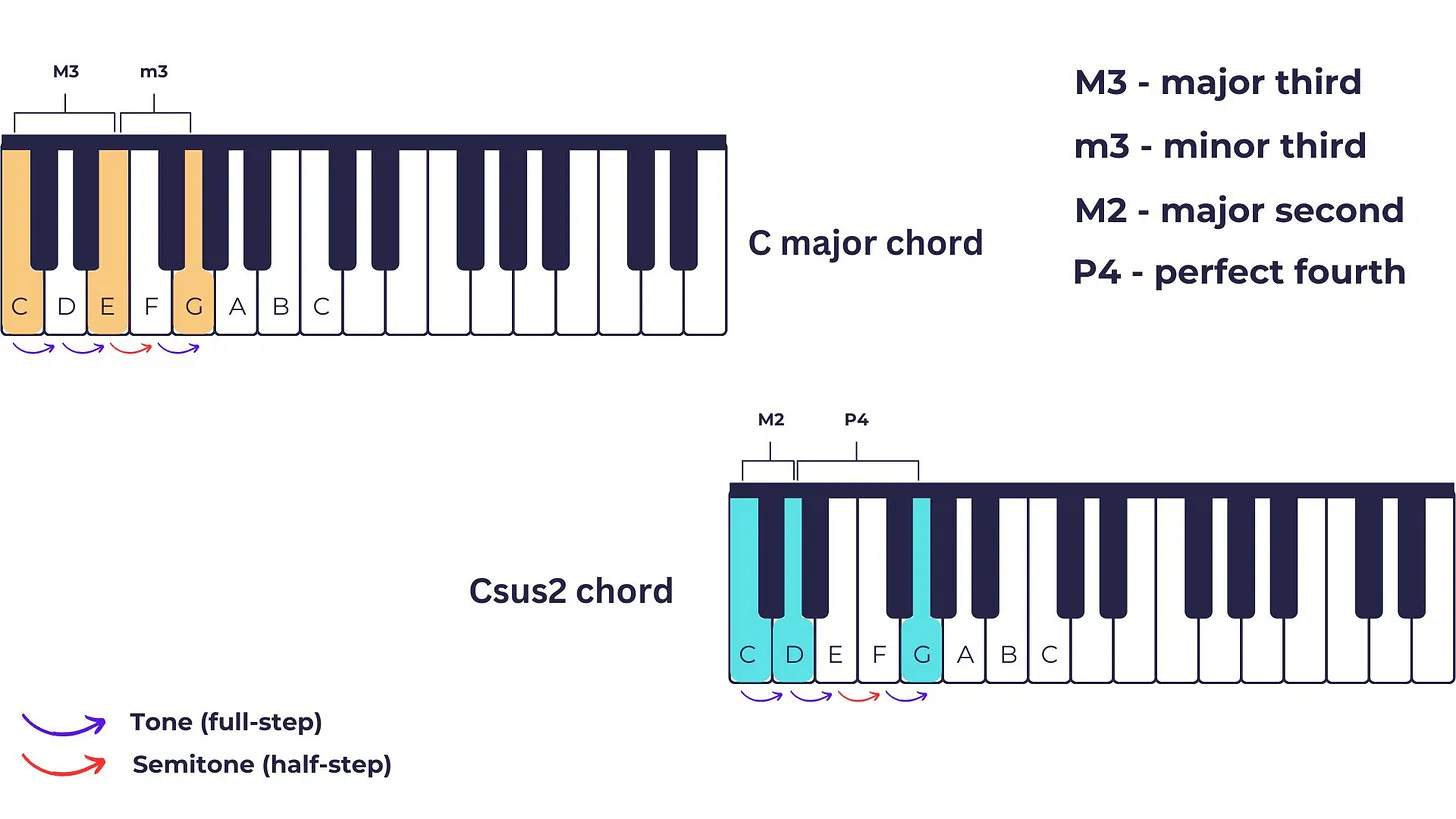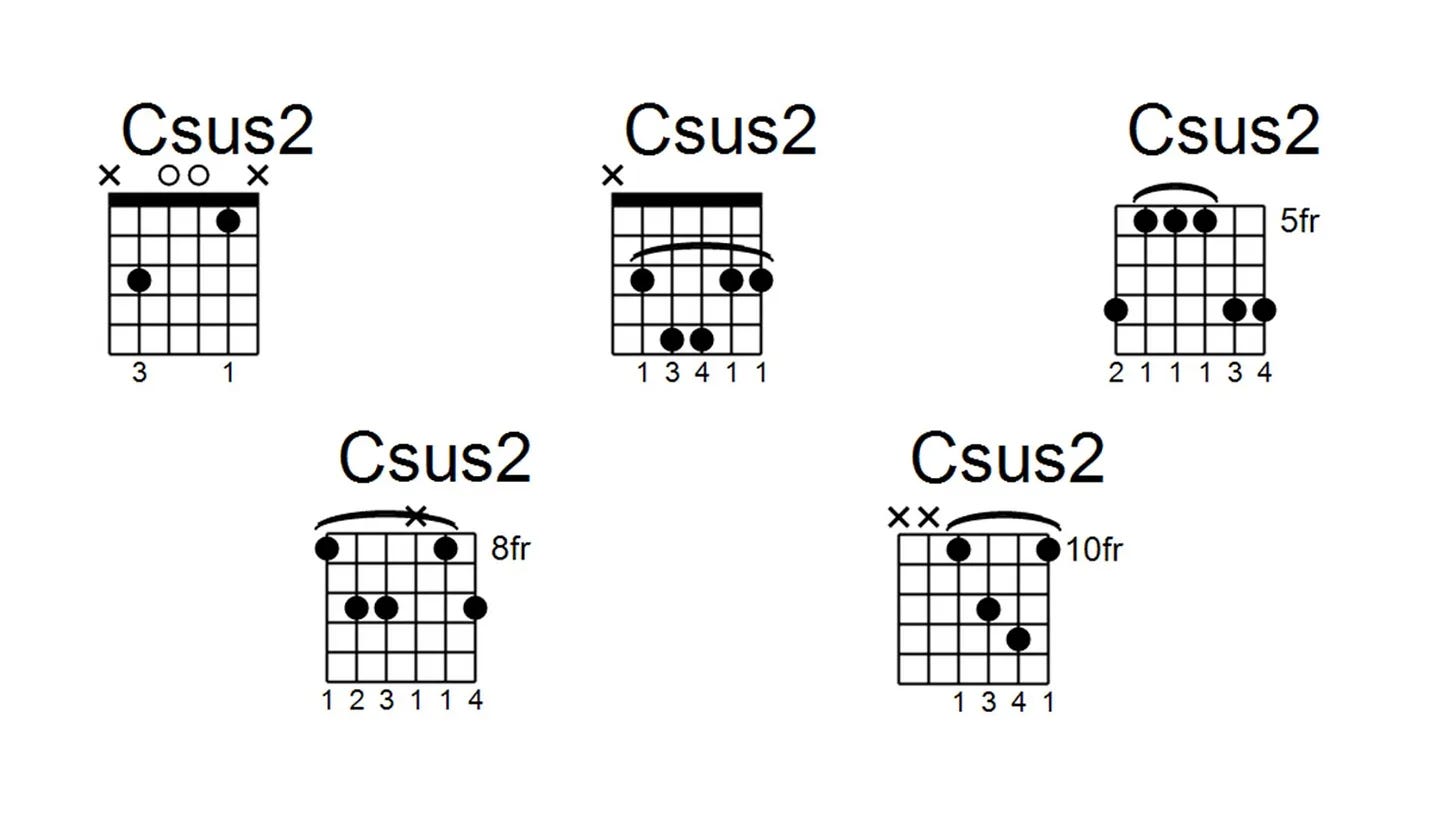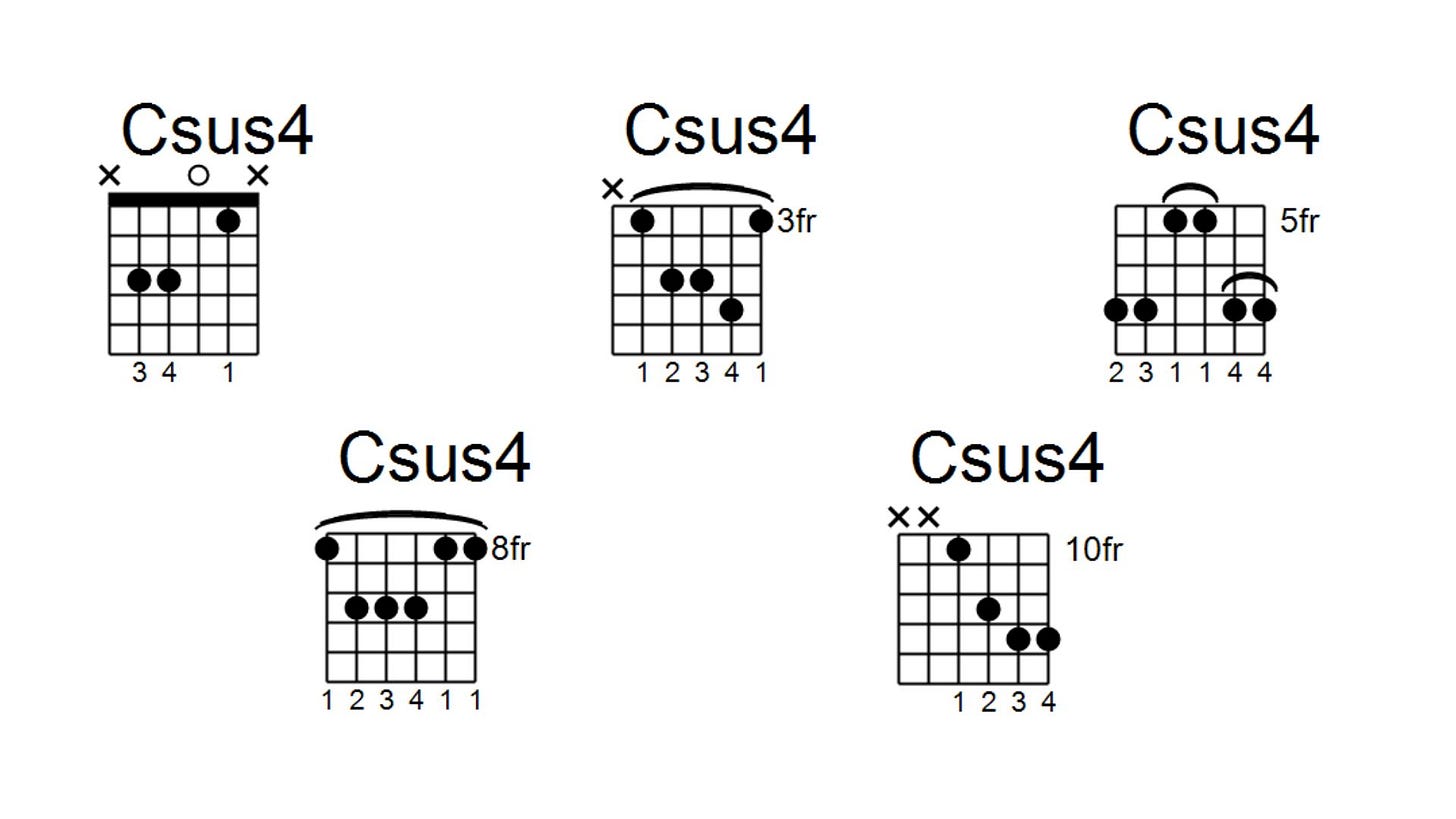Chords Mastery, Vol. 3 - Chord Inversions And Suspended Chords
Learning all about slash chords and sus chords
The Lessons So Far
Introduction
Right, so in this lesson we’re going to be discussing 2 (well, technically 4) different chords. But these 4 chords can be separated into two categories, which are of course inverted chords (or chord inversions) and suspended chords. And no, being called suspended has nothing to do with them receiving a time-out. Let’s begin.
Chord Inversions
A chord inversion occurs when you play a triad, be it major or minor or whatever, but you switch the order of the notes. Let’s consider a C major triad. As you know, it consists of the notes C-E-G.
But if you were to start this triad on E, you would get E-G-C, which is known as a C/E chord (you read that as C over E). This notation is not reserved for chord inversions only and it’s pretty easy to understand what it means.
So whenever you see a chord like D/C or C/E or whatever, what that means is that you need to play the chord designated by the first letter (so in your case a D chord or a C chord), but you also need to add the second note like…under it.
By under it, I mean it’s meant to be in a lower octave than the root note of the main chord. It will all become clear in just a moment when I show you some examples.
Going back to chord inversions, since a triad has three notes, that means that you can have two inversions. The first one would mean playing the notes from the triad, but starting from the second or middle note, and the second inversion refers to you playing the triad notes starting from the top or third note.
For C major, the inversions therefore would be E-G-C and G-C-E. Let’s see how these look like on a piano:
Let’s listen to them on the piano:
And here’s how you can play these inversions on the guitar:
Feel free to fiddle around with these inversions, as they can add a small twist to your playing without you having to sacrifice the chord quality (major or minor).
Now that we have that figured out, let’s move on to suspended chords.
Suspended 2nd (sus2) chords
Sus2 chords are pretty easy to understand. They contain three notes, the first two separated by a major second and the second and third separated by a perfect fourth.
For example, Csus2 is C-D-G. These chords are neither major nor minor, because this quality works in conjunction with the third music interval, which as you can see, is not present in such chords.
Musically, sus2 chords feel incomplete in a way and can sometimes give out this ominous feeling, like some form of impending danger is looming around the corner. In your playing, they can substitute any chord in a scale, except the diminished one.
Let’s see how the Csus2 chord looks like on a piano, compared to the regular C major chord:
Here’s how a Csus2 chord sounds on a piano:
And here’s how you can play them on your guitar:
Now that that’s taken care of, let’s move on to the next type of suspended chords.
Suspended 4th (sus4) chords
Sus4 chords also consist of 3 notes. The first two notes are separated by a perfect fourth while the second and third notes are separated by a major second. So basically, the same intervals as sus2 chords but in a different order.
As such, Csus4 is C-F-G. Similarly to sus2 chords, sus4 chords can replace any chord in your major or minor scale, except for the diminished one. Musically, they aren’t as tense as sus2 chords, but unlike them, they feel the need to be resolved (meaning, play the major or minor cousin of the chord, i.e. C after Csus4, Dm or D after Dsus4, etc.)
I always found this aspect quite interesting, though in my songwriting, I usually use them for an easy way to induce a bit of tension in my rhythm section. It also works to great effect in the intro of Lie To Me by Bon Jovi, where it creates quite a soothing and relaxing mood.
Let’s take a look at the Csus4 chord on the piano:
Here’s how a Csus4 chord is played on a piano:
And here’s how you can play them on your guitar:
Want to become a chords wizard on your guitar? I have got you covered. I have created an amazing PDF containing everything you need to know about chords on the guitar. It takes you all the way from beginner to chords expert in 111 pages.
Get started by clicking the button below:
Now, back to the show.
Conclusion
Chord inversions and suspended chords are very useful and very easy to use in your songwriting. They offer some alternatives to your regular chords and as such, allow you to add a bit of a different vibe to your tunes.
Feel free to play around with them, as you’ll find they fit in quite well without being too intrusive.
I am Andrew Milner, signing out. Thank you for reading my article and I will see you in the next one.
If you enjoyed this text and want to support my work, you can do so by donating on Ko-Fi, where you can buy me a coffee (or rather, beer in my case). Just click the button below to get started!










